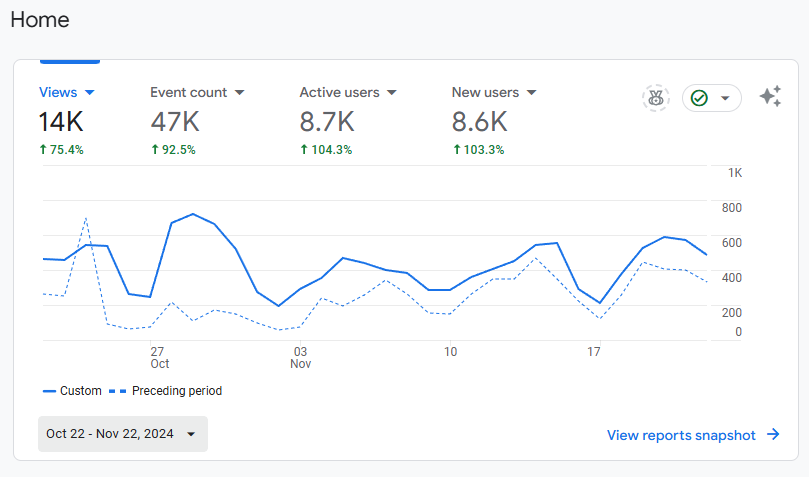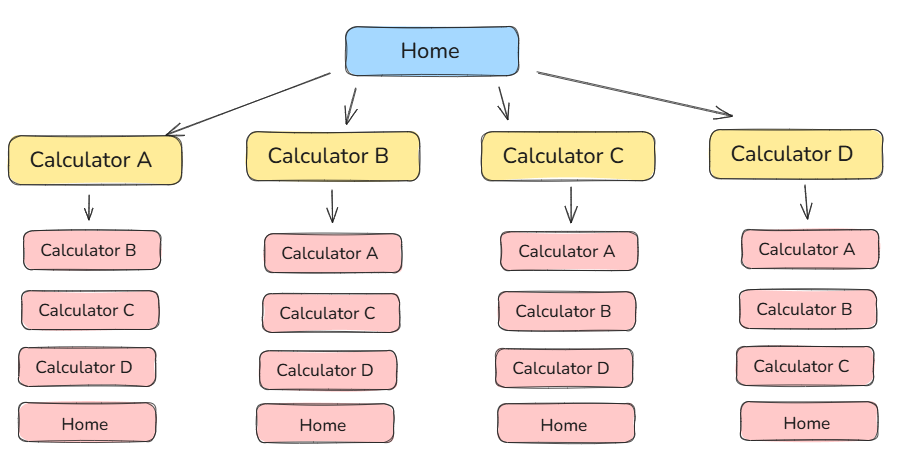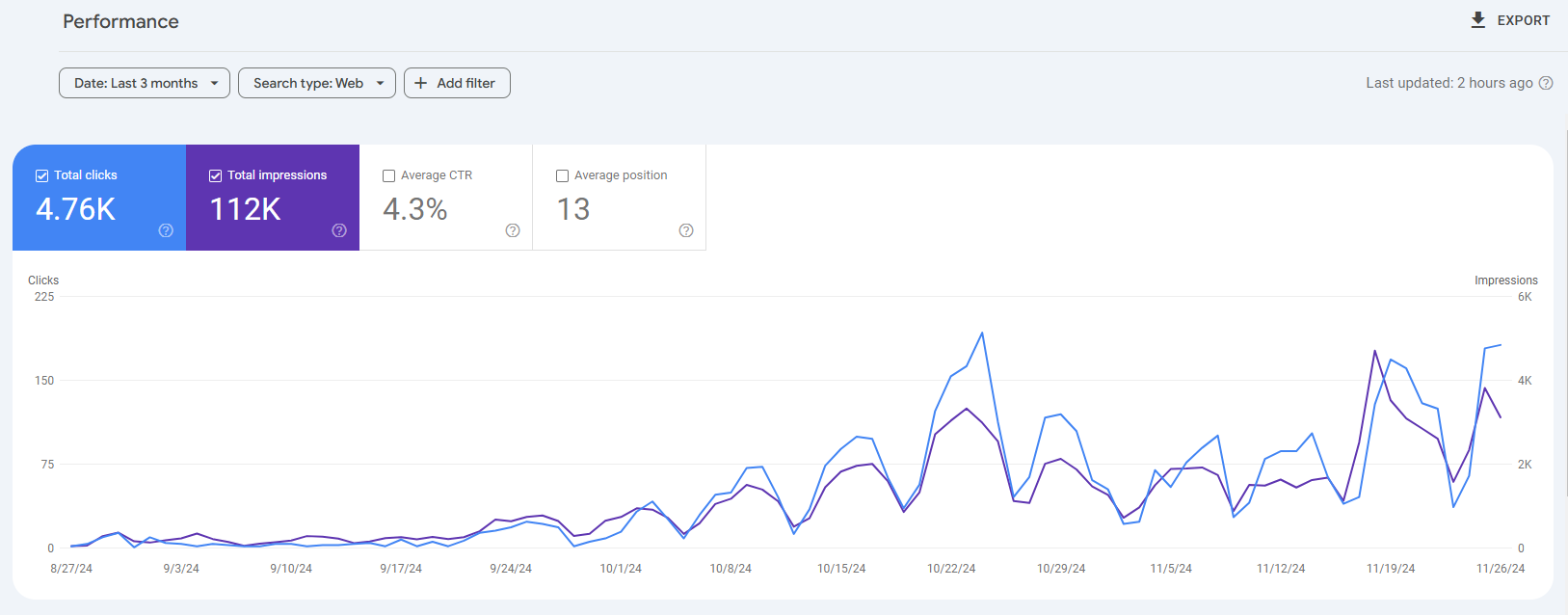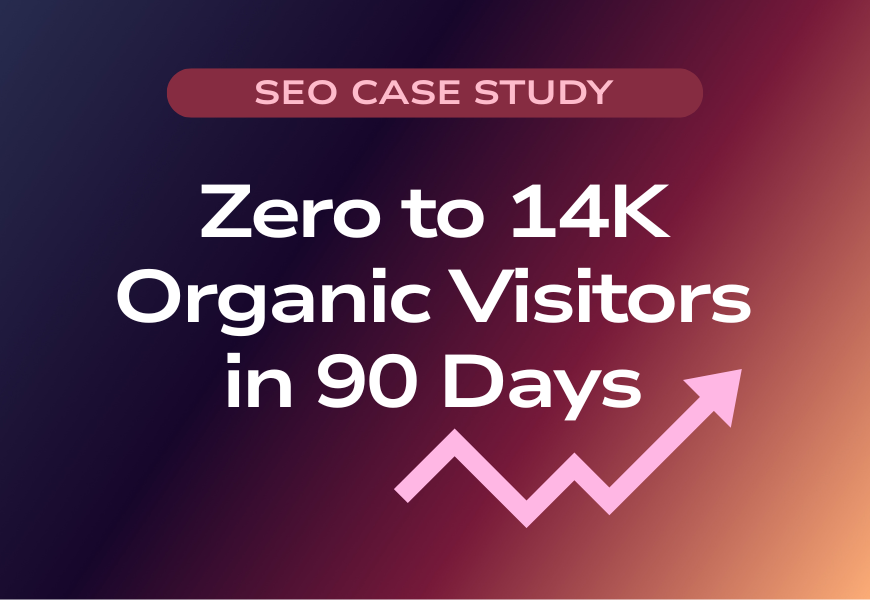From Zero to 14K Organic Visitors in 90 Days
When I worked at SOFTEKO, one of the largest content publishers in Bangladesh, I had the opportunity to manage various SEO R&D projects. This was the first project where I used the Exact Match Domain (EMD) strategy. Before that, I had worked with two major blog content sites: one with 2.7 million monthly visitors and another with 260,000 monthly visitors. Since pure content sites were no longer performing well on Google, we experimented with web tools and calculators using EMD strategies to explore new opportunities.
The initial results were incredible. The traction we gained on Google was far more promising than that of any other blog content site. The number of search impressions and clicks we generated in a very short time was simply astonishing.
Project Overview
- Client: SOFTEKO (In-house project)
- Timeline: August 2024 – November 2024
- Role: SEO Project Manager
- Industry: EdTech
- Niche: Academic Calculators

This project involved a simple website offering academic grading calculators and relevant information tailored for students, teachers, and parents. The site featured a total of 14 distinct calculators, each with application-specific variations. These calculators formed the core section of the site. To support this core section of the topical map, we developed an outer content hub containing informative articles, tutorials, and explanations of various grading systems.
Our Project Goals & KPIs
My client’s primary business model was publishing helpful blog content, ranking them on Google, and receiving millions of visitors. Then he tended to monetize them using display ads. As our target audience was from the USA, UK, Canada, and Australia, we used to generate a pretty good amount of MRR using display ads.
My client’s empire was based on blog content publishing. But with the emergence of generative AI chatbots like ChatGPT, Claude, and Perplexity, content generation became very easy. Random bloggers started publishing single-prompt AI-generated content. Some others automated the content creation process and published millions of URLs overnight. So, Google became stricter with its policies, bringing algorithm updates after updates and tanking thousands of content sites.
As the blog content business became vulnerable, we tried to replace the blog content with web tools. The goal was similar: drive millions of visitors using free web tools and monetize them via display ads.
So our KPIs were:
- Generating 100k organic traffic to get approval from the ad network, Raptive
- Increasing DR (Domain Rating) to above 40
- Diversifying traffic acquisition across multiple search engines
- Satisfying user search intent so that the bounce rate decreases
- Increasing session duration per visit to maximize ad revenue
My SEO Strategies Tailored for This Project
After conducting hours of research, I found a pattern: exact match domains were performing great on Google, whether it’s a tool site, blog content site, eCommerce site, or iGaming site. The EMD strategy works just fine, but you need to plan everything well.
Patterns I Found on the Google SERP
All the tool sites using the EMD strategy followed the same pattern:
- A high SV (search volume) keyword as the domain name (called an Exact Match Domain, or EMD)
- Targeting the same keyword on the homepage
- Placing the tool section above the fold on the homepage, with supplementary textual content below
- Some websites also target long-tail keywords of the base keyword (domain name) to create a cluster of relevant tools
- Some websites include a blog section that discusses the tools
So, I found websites with a single page/single tool. Some other websites have a cluster of tools. The last variety includes a tool cluster along with a blog section.
Choosing the Domain Name
In an ideal scenario, I would always want to pick a domain with the highest search volume for the base keyword, using a .com, .net, .org, or .io extension. But in this particular case, all of those domains were already taken. So, we had to move forward with a slight variation of the base keyword (one with moderately high search volume and a .io extension). It still works just fine if the other strategies are executed well. I found plenty of websites using slight variations of the root keyword that are still performing like a fireball.
Site Structure Planning
I divided the entire site into two parts:
- Core Part: A cluster of grade calculators
- Supplementary Part: Supporting the calculator cluster with relevant informative blog content
Here, I followed Koray’s framework of semantic SEO to create the site structure, that is, the topical map.
On the homepage, I targeted the root keyword, placing the calculator section above the fold and the supplementary textual content below it. I mapped out all the relevant long-tail keywords, which were essentially extensions of the root keyword. Together, they formed the calculator cluster for the site.
As the supplementary part, I created an additional content network covering tutorials, relevant information, and more.
Internal Linking Strategy
On the homepage, we linked to all other grade calculators within the calculator cluster to ensure strong internal connectivity. Each individual calculator page included links to every other calculator in the cluster, excluding itself, to maintain relevance without redundancy.

In the supplementary blog content section, we used contextual internal links to connect relevant calculators and related blog posts. However, we intentionally avoided adding contextual links within the supplementary textual content on each calculator page to keep the user experience focused and clean.
Content Strategy
For the content of both the calculator pages and the information hub, we used ChatGPT to generate the initial drafts. We manually created the content outlines based on in-depth research from the Google SERP, then instructed ChatGPT to write the content using those outlines, along with screenshots of our calculators for context.
After receiving the initial drafts, we thoroughly reviewed and manually edited each piece. During the review process, we ensured the content was human-friendly, LLM data-extraction friendly, informative, well-aligned with our calculators, and genuinely helpful for our users.
Technical SEO Implementation
The entire platform was built using Next.js with a custom CMS. We chose Next.js over WordPress to offer more advanced features, faster performance, and enhanced security.
We measured Core Web Vitals using Chrome’s Lighthouse extension and ensured the site passed all Core Web Vitals assessments.
Additionally, we implemented a variety of schema markups, including Breadcrumb, WebPage, SoftwareApplication, Organization, Person, FAQ, BlogPosting, and Website schemas.
E.E.A.T. Signals
To establish E.E.A.T., we added an author and reviewer section below the heading of each blog post. Both the author and reviewer have their name, photos, short bios, and social media profiles displayed to ensure trust, authority, and genuine human involvement.
The About Us page provides complete information about the entire team, including our mission and vision.
We ensure that every calculator, blog post, and aspect of the UI/UX is of high quality and genuinely helpful. Overall, the site’s organization and design send strong signals to users that it is trustworthy.
Content Publishing Frequency
We divided the entire site into two halves: the core section includes all the calculators, and the outer section includes the blog, information hub, tutorials, etc.
After the completion of development, we published all 14 calculators on the same day. We published each blog post, one each day, regularly. This is to ensure a fixed content publishing velocity.
Link Building
We didn’t do any kind of link building at all. We were confident that quality content combined with the right strategy could impress Google. Yes, I believe backlinks can speed up growth, but this project is a clear example that high-quality content alone is enough to rank quickly on Google if you can provide solid value to your users.
The SEO Result We Got
After publishing the calculator section, we began to see impressions in Google Search Console. Within the next 7 days, we started receiving clicks from Google. This rapid result, achieved without building any backlinks, exceeded our expectations and was a phenomenal performance compared to typical blog websites.
As shown in the screenshot below, since the first week of publishing, we have received a steady flow of clicks and impressions from Google.

Within the first three months, we reached 4.76K clicks and 112K impressions from Google alone. We were also getting a decent amount of traffic from Bing, Yahoo, and DuckDuckGo. As a result, after 90 days, we hit 14K monthly visitors with a 75.5% month-over-month growth rate.
Key Takeaways from This Project
- Exact Match Domains still rank well with a proper strategy.
- Clear site structure and topical clusters improve relevance.
- AI-generated content needs a thorough manual review.
- Fast site speed and schema markup support SEO.
- E.A.T. elements build user and search engine trust.
- Consistent content publishing maintains momentum.
- High-quality content can rank without backlinks.
Conclusion
This project proved that with the right strategy and high-quality content, an Exact Match Domain site can grow without any link building. Strong site structure, semantic SEO, and user-focused content were key drivers of this fast growth.


